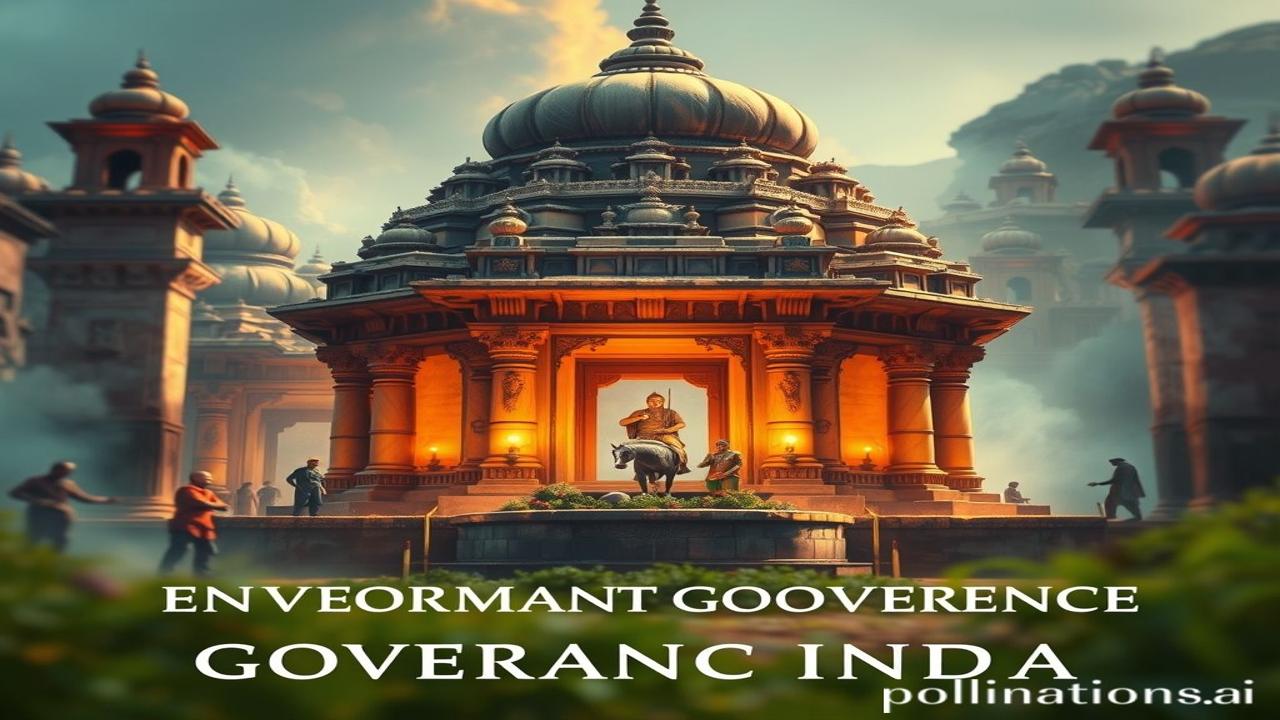Waqt Ki Ret Mein Dabi: Bharat Ki Prakriti Se Purani Yaari – Environmental Governance in Ancient India
Kabhi socha hai, jab mobile phones nahi the, jab factories ke dhuen se aasmaan kala nahi pada tha, tab humare purvajo ne prakriti ko kaise sambhala hoga? Imagine karo, ek shaant subah, nadi ke kinare baithe hue log, mandir ki ghantiyaan aur pakshiyon ki chehchahaat, yahi thi hamari dharti ki aawaz… aur hamare purvajo ne is aawaz ko suni thi aur uska samman kiya tha. Yeh kahani hai us zamane ki, jab environmental governance, koi nayi cheez nahi, balki jeevan ka ek hissa thi.
Prachin Bharat: Ek Dharti, Ek Parivar (Ancient India: One Earth, One Family)
Environmental governance in ancient India was not just a set of rules; it was a deeply ingrained philosophy woven into the fabric of society. This concept finds its roots in the Vedic period (around 1500-500 BCE) and continued to evolve through the Maurya and Gupta empires. We are talking about a time when concepts like Vasudhaiva Kutumbakam (the world is one family) weren’t just nice slogans, they were guiding principles!
Think about it: the Vedas, our oldest scriptures, are filled with hymns praising nature – the sun, the rivers, the trees. They were seen as divine, possessing Shakti. This respect translated into concrete actions. Like, did you know that certain trees were considered sacred and protected in ancient India? Peepal and Bargad (banyan) trees were often planted near temples and villages, not just for their shade but for their spiritual significance. These were often cared for by whole communities!
Dharmashastras and Arthashastra: Ancient Rulebooks
The Dharmashastras (ancient legal texts) and the Arthashastra (a treatise on statecraft by Chanakya) provide insights into the laws and customs surrounding environmental protection. These texts showcase a sophisticated understanding of resource management. For example, polluting water bodies was strictly prohibited, and there were penalties for deforestation. Kautilya’s Arthashastra explicitly talks about the duties of the state towards the environment, including the creation of forests and the protection of wildlife.
Zameeni Sach: Logon Ki Zindagi Mein Prakriti (Deep Dive: Nature in the Lives of the People)
Imagine a small village nestled beside a river. The gram pradhan (village head) would play a crucial role in managing resources. Farmers knew the importance of soil conservation, practicing techniques like terracing and crop rotation. Artisans used natural dyes and sustainable materials.
Dialogue Snippet:
“Arre Ramu kaka, iss baar kaunsi fasal lagani hai?” asked Maya, a young girl.
“Beti, iss baar hum bajra lagayenge. Zameen ko aaram bhi toh chahiye,” Ramu kaka replied wisely. This simple conversation reveals the deep understanding of sustainable farming practices passed down through generations.
Rulers like Ashoka took this understanding to a whole new level. After the devastating Kalinga War, Ashoka embraced Buddhism and dedicated himself to social welfare, including environmental protection. He planted trees along roads, built hospitals for animals, and prohibited the killing of certain animals. His edicts are a testament to his commitment to a harmonious relationship between humans and nature.
Dharohar Aur Pehchaan: Aaj Bhi Jinda (Legacy and Identity: Still Alive Today)
Aaj bhi, India mein, hum environmental governance ki unhi purani values ko dekhte hain. From the sacred groves of Meghalaya to the Bishnoi community’s unwavering commitment to protecting trees in Rajasthan, the spirit of ancient India lives on.
Humare rituals and festivals also reflect this deep connection with nature. Holi, the festival of colors, uses natural dyes (though these days, sadly, chemicals are more common). Diwali is celebrated with earthen lamps, a reminder of our reliance on the earth. And the worship of rivers like the Ganga is a powerful symbol of our reverence for natural resources. Bharatiyata is incomplete without this integral connection to Prakriti.
Mazedar Tathya Ya Bhram-Bhanjak (Fun Fact or Myth-Buster)
Myth-Buster: Log samajhte hain ki ancient India mein sab kuch perfect tha, lekin asli sach yeh hai ki even then, there were challenges like deforestation and resource depletion. However, the systems and values in place aimed to minimize these impacts.
Drishya Aur Bhavnayein (Visual and Sensory Layer)
Imagine the air filled with the fragrance of sandalwood and the gentle murmur of prayers. Picture the vibrant colours of handwoven textiles made from natural fibers. Feel the cool touch of a clay pot filled with fresh water from the river. The sounds of birdsong and the rustling of leaves in a dense forest. This was the sensory world of ancient India, a world where nature was an integral part of everyday life.
Antim Vichar Ya Uddharan (Closing Insight or Quote)
“Prakriti Rakshati Rakshitah” – Nature protects those who protect it. This ancient Sanskrit saying encapsulates the essence of environmental governance in ancient India. It’s a reminder that our well-being is inextricably linked to the health of the planet. Let’s rediscover this wisdom and make it a guiding principle in our modern lives. Let us strive to create a future where vikas (development) and prakriti (nature) go hand in hand, just like they did in the golden age of India.
